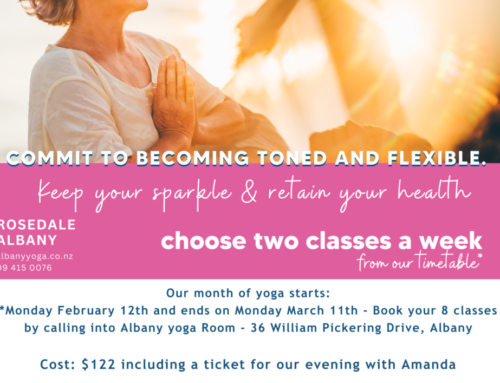
What is flexibility?
An easy mobile and elastic range of motion is the unrestricted and pain-free motion of joints and surrounding tissues.
Not everyone has the same capacity, but everyone is affected by the lack of stretching and this can create the shortening of muscles and soft tissue which leads to fatigue.
The main reason for taking care to remain flexible would be for full free movement and lengthening connective tissues to strengthen and facilitate bones and to build collagen and elastin. The tendons, ligaments, and muscle fascia work together to provide healthy functioning of the body’s structure.
In yoga we work to improve our flexibility and strength, we are interested in improving our range of motion and moving around with great ease. All those daily movements will seem so much easier and you will have fewer painful moments. This combined with a good mental approach and deeper concentration provides us with better health.
How is your range of movement your flexibility and your strength?
You can test your flexibility, with a few simple movements:
Test your hamstrings and lower back – While seated can you touch your toe while placing one leg straight and use the hand to reach your foot?
Tests your hips and lower back or knees – Do you find that you can squat down or kneel to get your shoes easily and then stay to tie up shoelaces?
Test your upper shoulders and upper body – Can you reach one hand behind and the other one upwards to touch a particular spot? Try touching both fingers together behind your back.
Finally, test your range of motion in the spine and the strength of the legs – Try stepping forward with your right leg and using your left hand to reach towards something. A typical movement in the garden but a great range of motion as demonstrated by the image in our article. Revolved triangle takes some practice but is a great pose.
If you are looking to find that extra edge in your health then try yoga. It will help you to go deeper into what exactly is required to regain flexibility. Learn how to stretch correctly and what to avoid to ensure you are performing movements (in poses) safely. It takes patience, consistency and effort. We recommend a weekly regime to start and then take that to at least a few rounds of yoga moves every other day to maintain a healthy peak of preformance needed to stay moving around easily.
What stretches and poses can I do at home once I have tested myself?
Try placing your legs up the wall but avoid if you are pregnant, suffering from high blood pressure or have eye problems.
A half dog on the wall by standing a legs length away from the wall placing your hands at shoulder height or as low as your elbows. Elongate the line from the crown of the head to the wall by moving the hips directly behind you.
The use of props to open the chest. Two blocks one under the head that is higher than the one under the shoulder blades (see image). Start lying down while keeping legs bent onto the floor. Later you may straighten your legs once the lower back and hamstrings improve in flexibility.




